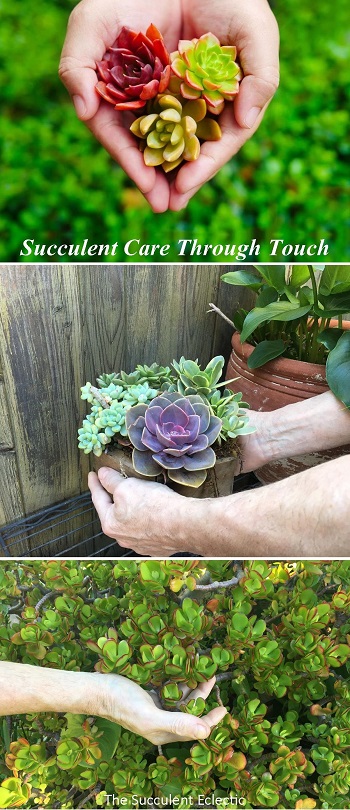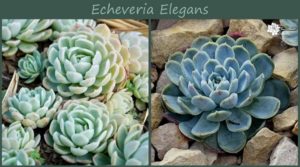We spend so much time looking at our beloved succulents. We wonder what it means when they change color. And we worry when they seem to droop or stretch. We watch for signs that they are over- or under-watered. This is all important. But it’s not enough. Sometimes, succulent care requires more of a hands-on approach. Read on to learn how your sense of touch can help you determine when to water your succulents, whether they need more sun and how to evaluate their overall health.
Monitoring Succulents’ Health Through Touch
In this Post We'll Cover:
- Monitoring Succulents’ Health Through Touch
- Succulent Care Through Touch – Establishing a Baseline
- Succulent Care – How Do Healthy Succulents Feel?
- Is Your Succulent Over- or Under-Watered?
- When to Water Succulents – Touch will Tell
- Does Succulent Need More Light? Touch Will Tell
- Heat Stress in Succulents – Early Signs
{Please note, some links in this post may be affiliate links to sites that pay me a small commission if you click on the link and make a purchase. This commission is at absolutely no cost to you. I only recommend products and companies that I have worked with and truly love! ~Kat}
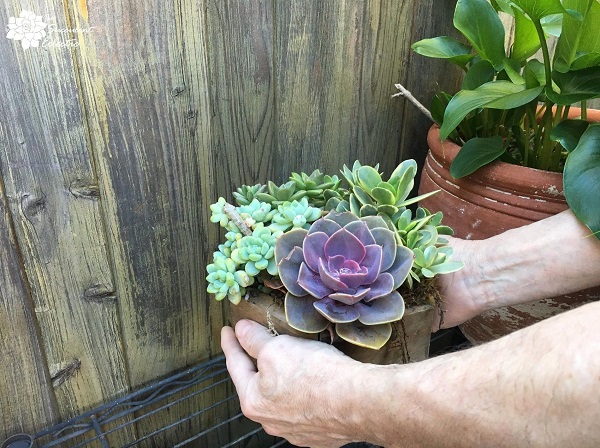
Long before I spent 15 years working in the garden industry, and before I fell so hard for succulents, my husband, Jerry, was my plant mentor. I used to tease him about his love for his plants. That he treated them like “stationary pets”! (Now, he teases me for reading them
Jerry has been blind since the age of 3. He has always loved plants, and they return his care with lush growth and incredible blooms. But he cannot see them
For succulent lovers, how to water is our biggest concern in succulent care. We watch our plants, many of us keep a watering journal we update religiously, yet still, we sometimes fail and lose a plant due to poor watering. While overwatering is the biggest culprit, I have recently counseled two separate gardeners who were surprised to learn their plants were dying due to under watering. How could this happen? They were conscientious and understood that too much water would be the death of their succulents. They watched for the signs they understood, yet still missed the fact that their plants needed water. Had they known to touch their plants, to learn their needs through feel, this would not have happened.
Succulent Care Through Touch – Establishing a Baseline
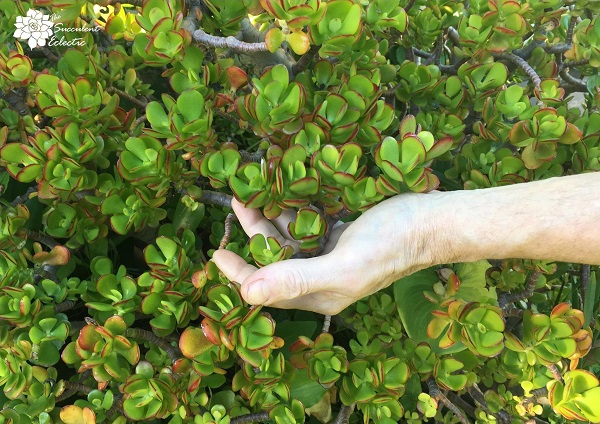
To improve your succulent care, you must first recognize healthy plants, so you can make note of any changes that occur. Let’s start by establishing a baseline for understanding your succulents’ health through touch. Look through your succulents, and for now, set aside any with epicuticular wax, the whitish film on the leaves. We’ll discuss how to touch them without disturbing the wax at a later date. Also, set aside any with spikes or spines or thorns. We’re only working with smooth-leaved succulents for this post.
Now, gently feel the leaves and the stems of your plants. Don’t force them to break, but gently lift, push, nudge them with your fingers. Lightly squeeze them and get a sense of how much they yield to your touch and how much they resist. If you don’t feel any yielding, gently increase your pressure just until you do. A healthy succulent should feel firm to your touch. Whether you’re feeling leaves or stems, they should be firm and somewhat rigid, like a fresh carrot.
Succulent Care – How Do Healthy Succulents Feel?
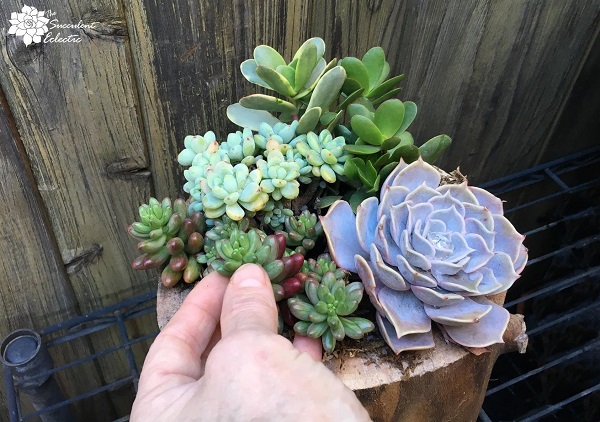
While a carrot can bend a small amount before it breaks, it resists this. So, too, should a healthy succulent. When a carrot is very old and has lost much of its stored moisture, it is limp and quite bendy. When a succulent feels like this, typically, it is a sign of a problem, like insufficient water. Some succulents, like Senecio
Take note of how your plants feel. Note, too, how those that have just been watered feel different from those that you know need to be watered soon. Especially, be sure to feel your succulents before you water, then a couple hours after
Some plants, like Aeonium or
Is Your Succulent Over- or Under-Watered?
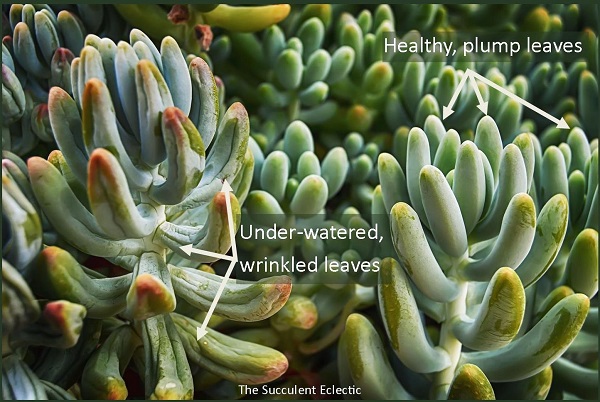
Judging when to water your succulents by touch will improve
A healthy succulent leaf feels full, plump and only slightly yielding, like a fresh grape. An under-watered succulent’s leaves will wrinkle and become limp, sort of like a soft raisin. When a succulent is over watered, the stored water bursts through the cell walls, leaving the leaves feeling squishy, like a rotten grape.
When to Water Succulents – Touch will Tell
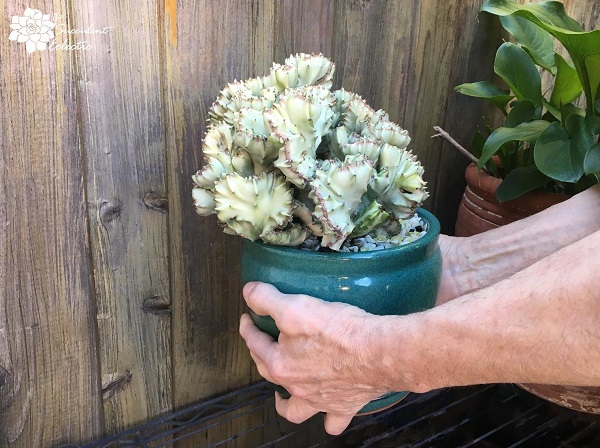
There are three primary ways to determine when to water your plant through touch: the feel of the leaves as above, the moisture in the soil and the weight of the pot. You likely know to touch the soil, or even poke your finger down into the soil to judge its moisture content. If you don’t feel any moisture, but the soil is cool to the touch, that is the remaining water in the soil that feels cool — it is still at least damp. When soil particles come away onto your finger, it still needs some drying time. If you feel no temperature change and your finger does not have soil clinging to it — it’s time to water.
When it’s time to water a container succulent, first lift the container in your hands when it is nothing by dry soil and your plant. Then water it. Now lift it again, and make note of how much heavier it is. That difference is the water in the soil. As your plant processes the water, and it leaves the soil, the container will grow lighter. Lift the container each day, and you’ll notice a gradual change. With practice, you’ll come to know within a day or two of when you succulent needs water simply by feeling the weight of the pot.
Does Succulent Need More Light? Touch Will Tell
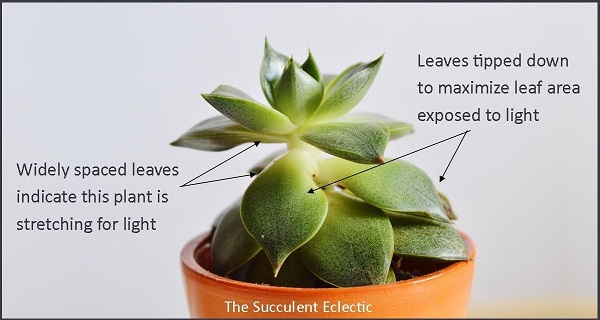
You know succulents stretch when they need more light. If you read my post, you know that the leaves will angle downward to maximize the leaf surface exposed to the light even before they stretch. Acting on this early warning sign will keep your plants healthy and compact. But how to tell the difference between a plant angling its leaves for more light, and one whose leaves are
When your succulent’s leaves are pointing down, gently try to tip them back up. If they move easily, the water pressure in their storage cells is low. The leaves are drooping and your succulent may need water.
By recognizing and acting on the early signs that your succulent needs help, you ensure the continuing health of your plants. Succulent care can mean intervening to save a succulent from catastrophic failure, but it’s far better to maintain good health and act at the first sign of trouble. Using touch will help you to clearly gauge your succulent’s health.
Heat Stress in Succulents – Early Signs
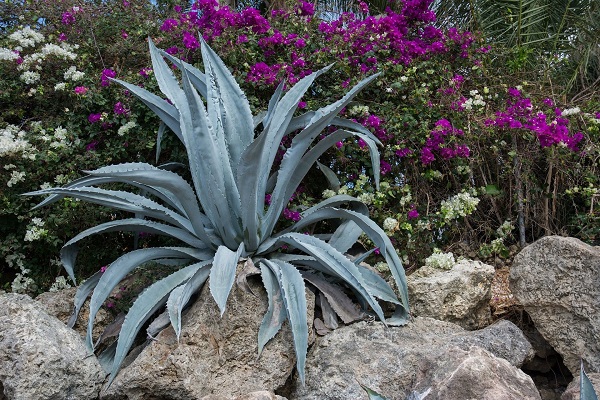
If you have determined above that your succulent is drooping, don’t water right away. First, test the soil, and, if it’s in a container, lift it. If the soil is dry, go ahead and water. But, if the soil is not dry, investigate further. Is the drooping plant currently in direct sun? If so, wait for an hour or so past sunset and feel the leaves again. If the leaves now feel firm and rigid again, your succulent was heat-stressed.
One of the strategies many plants have developed to survive in hot weather conditions is the ability to clamp down on transpirationTranspiration is the process of water movement through plant... More — the process where a plant releases oxygen and water back into the environment through special cells on their leaves called stomata. Essentially, this is how plants exhale. To keep from losing too much of their precious stores of water, a plant can elect to close its stomata during the heat of the
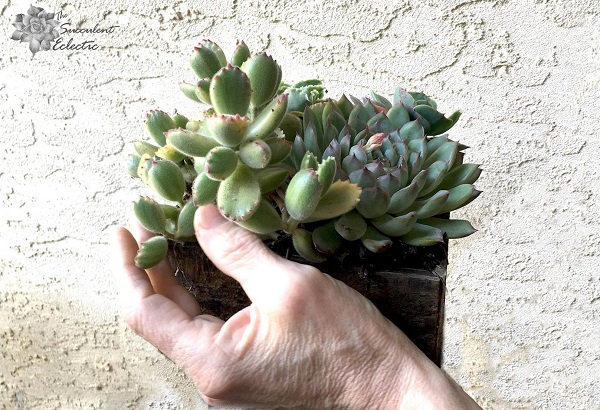
Using touch will improve your succulent care. Here, we have discussed 3 important areas where touch will tell you of your succulent’s needs. I urge you to touch your succulents frequently to monitor their health and clue you into any changes they experience. It is also a safer way to show your love for your plants than giving them extra food and water!
I hope this guide to improving your succulent care through touch has been helpful for you. Please feel free to ask any questions — I am here to help! Just leave a comment, and I will get right back to you.
As Jerry says — Keep Growing!

P.S. For more succulent care information, please subscribe to The Succulent Eclectic! I’ll send you my FREE e-course 7 Steps to Succulent Success!
P.P.S. Why not join my Facebook Group for succulent lovers? We talk about succulent care, propagation, succulent identification, and design. It’s a warm and welcoming group that would love to meet you!
